Every year around mid February, I am ready for winter to be over and start longing to get my hands dirty and to dig in the soil again. While most of the field work is still several weeks away, there is plenty to do in preparation for the season ahead. At the top of the late winter to-do list: sow seeds.
Starting your own seeds is a great way to get a jump on the season. It also gives you access to hundreds of specialty flowers that you won’t find at your local nursery or big box store. Plus, it is the most affordable way to fill a garden fast.
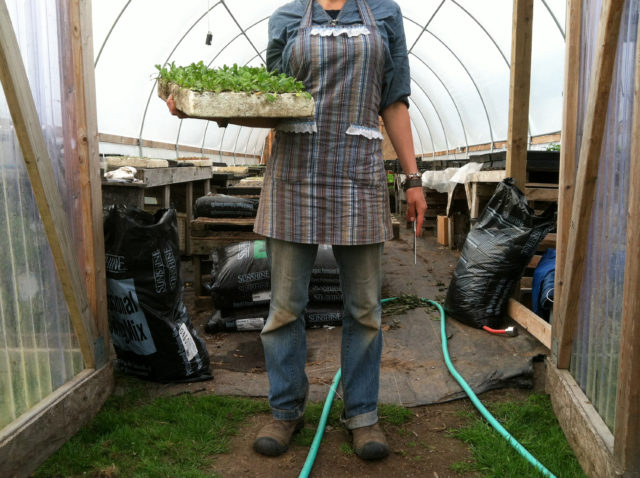 I start roughly 90 percent of my seeds inside the greenhouse. If you don’t have a greenhouse, don’t worry. A simple wire rack rigged with lights will work just fine. The first few years I grew flowers, I didn’t have a greenhouse and I started all of my seeds in the basement, on shelves, under lights. It was easy, inexpensive and a great way to grow lots of plants in a small space.
I start roughly 90 percent of my seeds inside the greenhouse. If you don’t have a greenhouse, don’t worry. A simple wire rack rigged with lights will work just fine. The first few years I grew flowers, I didn’t have a greenhouse and I started all of my seeds in the basement, on shelves, under lights. It was easy, inexpensive and a great way to grow lots of plants in a small space.
Starting seeds indoors allows me to transplant much larger, more established plants into the field once the weather has warmed. Larger plants have a better chance of contending with weed and insect pressure.
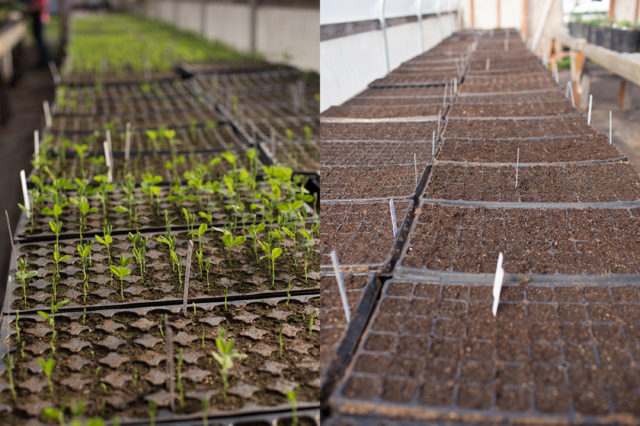 I’ve learned a lot about seed starting over the years, mostly through killing a lot of baby plants. There’s nothing I hate more than seeing trays of beautiful little baby flowers go downhill before my eyes because I overwatered, underwatered, or got too excited about transplanting and didn’t properly harden them off.
I’ve learned a lot about seed starting over the years, mostly through killing a lot of baby plants. There’s nothing I hate more than seeing trays of beautiful little baby flowers go downhill before my eyes because I overwatered, underwatered, or got too excited about transplanting and didn’t properly harden them off.
Learning the hard way isn’t the most fun way to start seeds, so hopefully this post will help you avoid discouraging mistakes. The following is a quick list of tips meant to compliment other seed starting resources we’ve created.
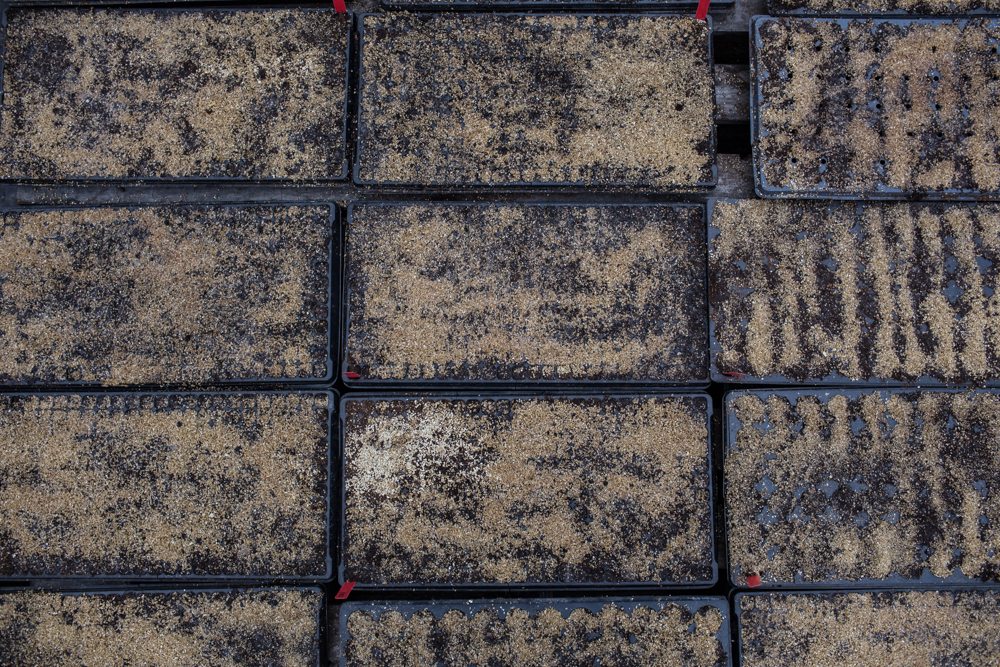 After filling your trays or containers with soil, be sure to lightly tap them on a hard surface so that the soil settles, eliminating any air pockets. Add any additional soil needed to fill all of the cells or containers to the top.
After filling your trays or containers with soil, be sure to lightly tap them on a hard surface so that the soil settles, eliminating any air pockets. Add any additional soil needed to fill all of the cells or containers to the top.
For many years I used regular potting mix to cover the seeds in their trays. But I found that if the soil dried out it formed a crust on the top of the tray which inhibited growth and made it harder for the little seedlings to push up through the surface once they germinated. I switched to dusting newly sown trays with fine vermiculite a few years ago and haven’t had this issue since.
There are a handful of varieties such as ageratum, columbine, flowering tobacco and statice that require light to germinate. So when sowing, do not cover these seeds as it will inhibit sprouting.
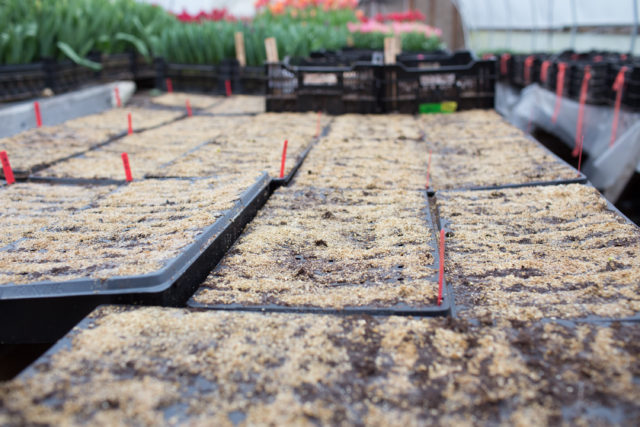 Hardy annuals such as bachelor’s buttons, bells of Ireland, bupleurum, larkspur, love-in-a-mist, orlaya and queen Anne’s lace can be tricky to germinate in the greenhouse, so pop seeds into the freezer for 10-14 days before sowing; then they will sprout readily. If planting outdoors, this step is not necessary, but it can help speed up germination.
Hardy annuals such as bachelor’s buttons, bells of Ireland, bupleurum, larkspur, love-in-a-mist, orlaya and queen Anne’s lace can be tricky to germinate in the greenhouse, so pop seeds into the freezer for 10-14 days before sowing; then they will sprout readily. If planting outdoors, this step is not necessary, but it can help speed up germination.
Some varieties benefit from sowing multiple seeds per cell. They don’t need as much room to spread out on their own. These include bachelor’s buttons, bupleurum, cress, dill, flax, grains, grasses, gypsophila, larkspur, love-in-a-mist, breadseed poppies, saponaria, stock, tickseed and queen Anne’s lace.
 Be sure to moisten the seed starting mix before filling your trays or containers. If you plant your seeds into dry potting mix and then try to overhead water, you’ll end up washing away your little seeds. When I’m sowing a lot of seeds I open up a 3-4 bags of potting soil, get it nice and wet with the hose and let the soil fully wick up the water before I start filling trays.
Be sure to moisten the seed starting mix before filling your trays or containers. If you plant your seeds into dry potting mix and then try to overhead water, you’ll end up washing away your little seeds. When I’m sowing a lot of seeds I open up a 3-4 bags of potting soil, get it nice and wet with the hose and let the soil fully wick up the water before I start filling trays.
Super tiny seeds such as Iceland poppies, snapdragons and foxglove are like dust and require special care to get started. After sowing seeds, I barely cover them with a fine dusting of vermiculite. Bottom water the seeds by setting your tray in a flat of standing water and let it wick up the moisture from below versus overhead watering. If you water from overhead you risk washing away the tiny seeds with the powerful spray.
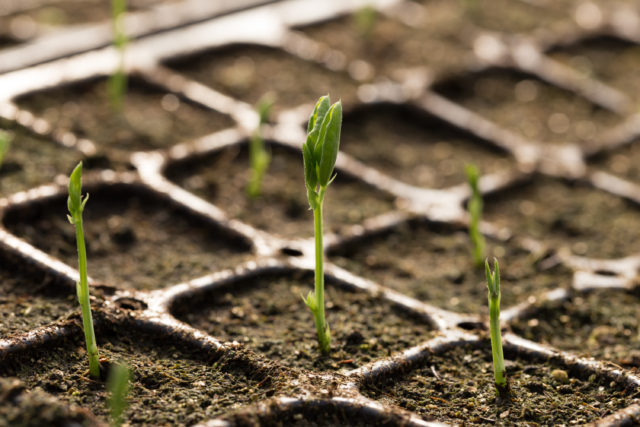 In the rush to get growing, it is easy to want to get started sowing too early. It’s important to know just how early you can start for your area.Before you go crazy sowing seeds in late winter and early spring, it’s important to know just how early you can start—if in doubt, ask your local Master Gardener group or staff at a trusted nursery for the expected last frost date.
In the rush to get growing, it is easy to want to get started sowing too early. It’s important to know just how early you can start for your area.Before you go crazy sowing seeds in late winter and early spring, it’s important to know just how early you can start—if in doubt, ask your local Master Gardener group or staff at a trusted nursery for the expected last frost date.
Fast-growing annuals that bloom in summer (such as cosmos, sunflowers, and zinnias) shouldn’t be started more than 4 to 6 weeks before the last spring frost, otherwise they’ll get too big for their growing container and have soft, weak foliage and overgrown roots by the time you can plant them out into the garden.
On the other hand, slow-growing plants like perennials can take a couple of weeks to germinate, so sow them indoors 10 to 12 weeks before the last spring frost date. Once you know your last frost date, check the back of each seed packet, or catalog description for days-to-harvest to figure out how soon you can start them indoors.
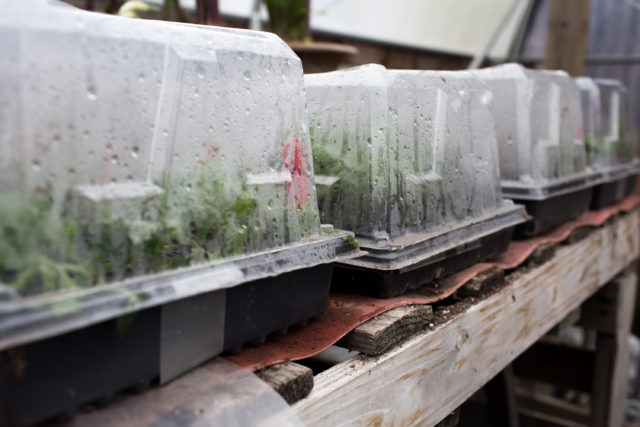 It is amazing how much faster and how much better seeds germinate with a little added heat. Propagation mats work great for this. If you are a home gardener or small scale flower farmer you can get by with just one or two mats.
It is amazing how much faster and how much better seeds germinate with a little added heat. Propagation mats work great for this. If you are a home gardener or small scale flower farmer you can get by with just one or two mats.
Leave your seed starting trays on the heat mat only until they germinate. Once sprouted, move the tray off the heat and make room for the next seed starting tray(s).
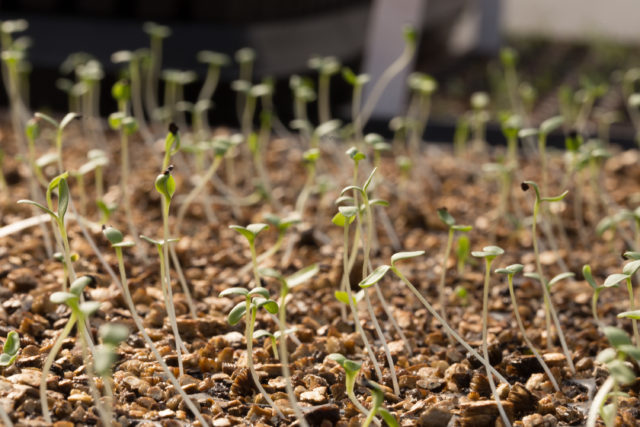 Don’t seed more than one type of flower in the tray, especiallyif you plan to use a plastic dome lid. Germination rates vary by variety so it is best to have all the cells filled with the same flowers, that way you won’t be forced to remove the dome too soon for a row of early germinators or too late for those slow to germinate.
Don’t seed more than one type of flower in the tray, especiallyif you plan to use a plastic dome lid. Germination rates vary by variety so it is best to have all the cells filled with the same flowers, that way you won’t be forced to remove the dome too soon for a row of early germinators or too late for those slow to germinate.
Plus, having variable plant heights in the same tray makes adjusting the height of the lights over the trays difficult. Shorter plants within the tray can get leggy when light is adjusted for the taller plants.
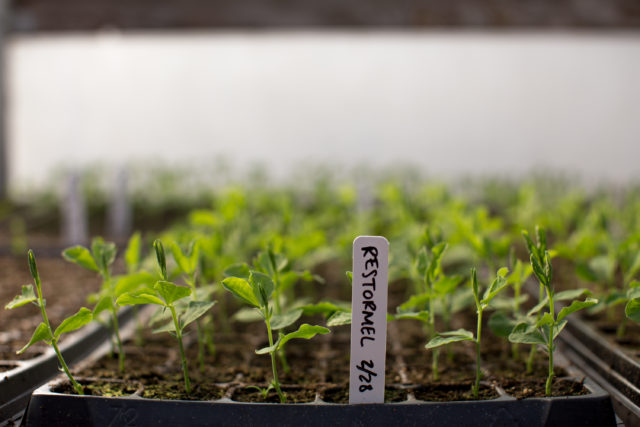 It’s extremely important to label your seed trays immediately after sowing. Avoid the curse of the “mystery plants” by making sure to always write the name of the flower you are sowing and the date it was sown on the back of a waterproof plant tag.
It’s extremely important to label your seed trays immediately after sowing. Avoid the curse of the “mystery plants” by making sure to always write the name of the flower you are sowing and the date it was sown on the back of a waterproof plant tag.
I always stick the label in the same corner of every seed tray, so they line up uniformly.
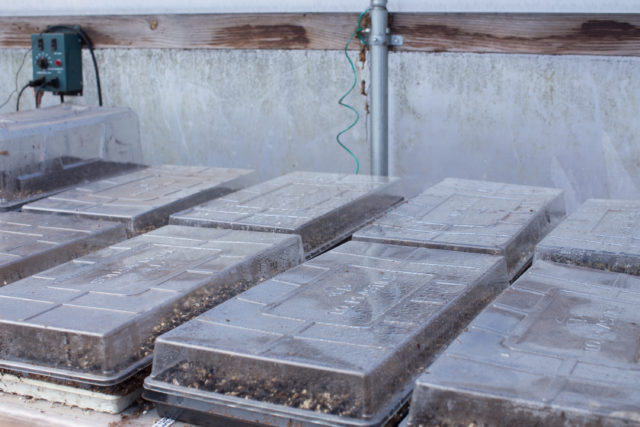 If you use plastic dome lids, be sure to remove them as soon as your seeds germinate. Domes are only needed to encourage germination but once seedling emerge they need fresh air and maximum light.
If you use plastic dome lids, be sure to remove them as soon as your seeds germinate. Domes are only needed to encourage germination but once seedling emerge they need fresh air and maximum light.
I like to have a fan running in the greenhouse to help with air circulation and the gentle breeze stimulates young plants, preventing spindly, weak growth.
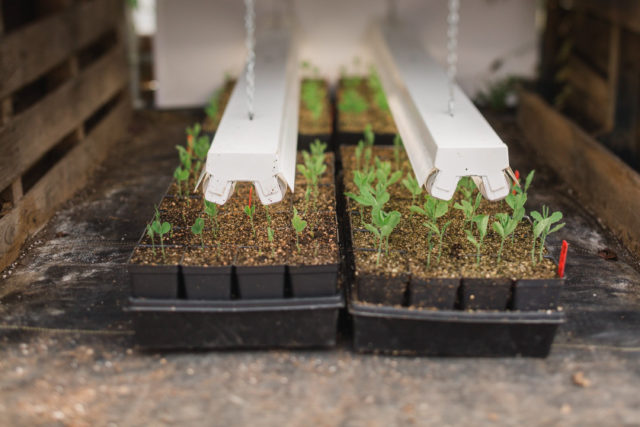 If you use grow lights, be sure to adjust them so that they are no more than three inches above the tops of your plants. When I was a newbie, this was not intuitive and as a result, I grew lots of gangly, leggy plants because they weren’t getting enough light. The bulbs were simply too far away from the foliage canopy to provide adequate light.
If you use grow lights, be sure to adjust them so that they are no more than three inches above the tops of your plants. When I was a newbie, this was not intuitive and as a result, I grew lots of gangly, leggy plants because they weren’t getting enough light. The bulbs were simply too far away from the foliage canopy to provide adequate light.
Once I realized my mistake, I adjusted the lights to about two inches above the top of the leaves. While this seems close, it is much better for the plant. Once I had the lights adjusted, I found that the plants grew so much better, with nice strong stems.
If you can, invest in automatic timers. If you are using lights to start your seeds indoors, you’ll want to invest in an inexpensive timer that will automatically turn on the light for a preset amount of time each day. This will help you avoid forgetting turning your lights on and off. Plants need 14 to 16 hours of light each day to grow.
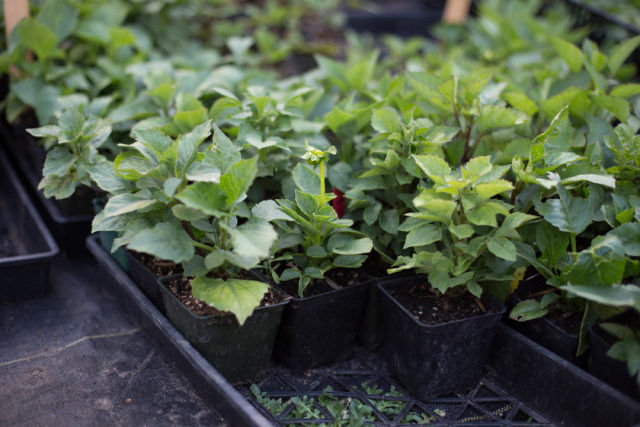 Be sure to “harden off” your plants before you transplant them. I am embarrassed to admit just how many plants I fried because I didn’t do this key step. In my excitement to transplant my baby plants into the field, I didn’t give them any chance to acclimate to their new outside environment. “Hardening off” is simply a process of allowing your plants time to gradually adjust to their new environment.
Be sure to “harden off” your plants before you transplant them. I am embarrassed to admit just how many plants I fried because I didn’t do this key step. In my excitement to transplant my baby plants into the field, I didn’t give them any chance to acclimate to their new outside environment. “Hardening off” is simply a process of allowing your plants time to gradually adjust to their new environment.
Think about it: your little plants have been in a warm and cozy, temperature-controlled environment for weeks, or months. If you suddenly take them from that space and expose them to bright sun, wind and temperature swings in the open garden, it is stressful to the plant.
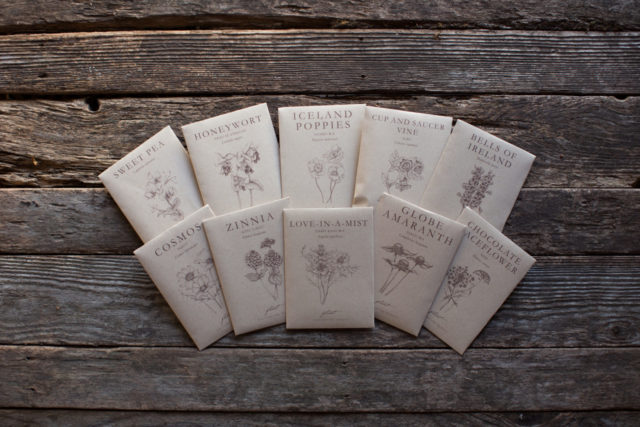 You will likely have leftover seed after sowing which can be saved for future use. Be sure to store your seeds in a cool, dark and dry place where no insects or rodents can get to them. Though germination rates will decrease over time, most seeds will maintain their viability for up to two years.
You will likely have leftover seed after sowing which can be saved for future use. Be sure to store your seeds in a cool, dark and dry place where no insects or rodents can get to them. Though germination rates will decrease over time, most seeds will maintain their viability for up to two years.
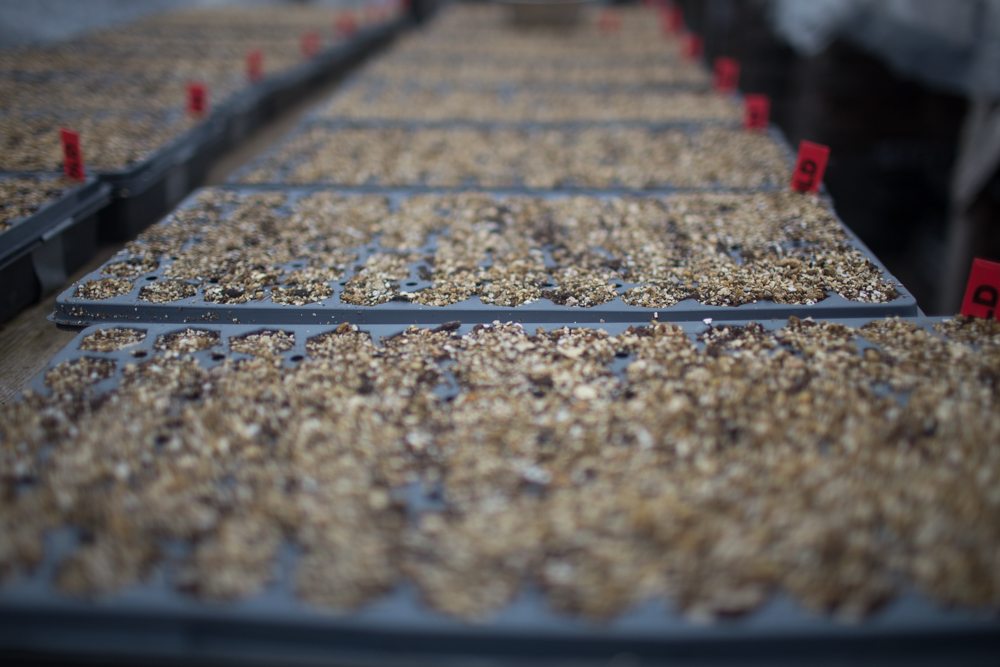 On your seed starting journey you will inevitably make mistakes and kill some plants. But cut yourself some slack. Just know that mistakes are inevitable. That is part of the joy in gardening is learning what systems work well for your situation, growing system and your climate.
On your seed starting journey you will inevitably make mistakes and kill some plants. But cut yourself some slack. Just know that mistakes are inevitable. That is part of the joy in gardening is learning what systems work well for your situation, growing system and your climate.
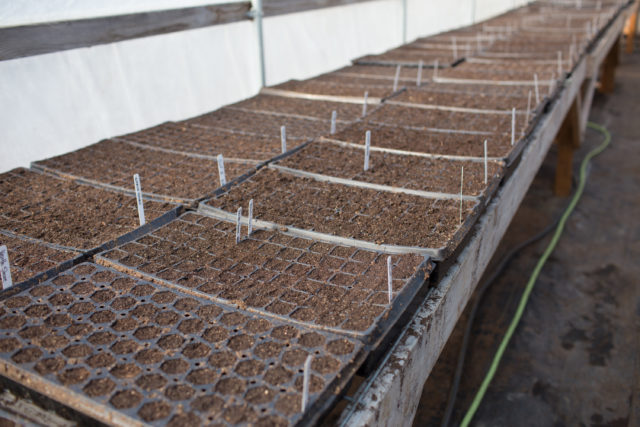 Starting your own seeds can be intimidating for new gardeners, but once you get the hang of it there’s nothing to fear and it can be great fun.
Starting your own seeds can be intimidating for new gardeners, but once you get the hang of it there’s nothing to fear and it can be great fun.
In addition to some of the tips I’m sharing today, I want to make sure you know about the following Floret resources:
– My recent book, Floret Farm’s Cut Flower Garden: Grow, Harvest & Arrange Stunning Seasonal Blooms has detailed seed starting tips and tricks.
-In the Floret Resources section, I have created a little Starting Seeds 101 tutorial and photo essay (be sure to click the arrows to advance the images) with some of the basics.
-Here on the blog, you’ll find a past post covering Seed Starting Basics.
-In the Floret Shop, I’ve included sowing and growing instructions for dozens of my favorite flowers.
One of my goals here on the site is to provide you with the best information, to help you grow great flowers and hopefully dispel the notion that success is only possible for professionals. You can do it!
I’d love to hear any tips or tricks that you swear by when it comes to seed starting. I always love to learn new things.
The post It’s Seed-starting Time! appeared first on Floret Flowers.
Starting your own seeds is a great way to get a jump on the season. It also gives you access to hundreds of specialty flowers that you won’t find at your local nursery or big box store. Plus, it is the most affordable way to fill a garden fast.

Starting seeds indoors allows me to transplant much larger, more established plants into the field once the weather has warmed. Larger plants have a better chance of contending with weed and insect pressure.

Learning the hard way isn’t the most fun way to start seeds, so hopefully this post will help you avoid discouraging mistakes. The following is a quick list of tips meant to compliment other seed starting resources we’ve created.

For many years I used regular potting mix to cover the seeds in their trays. But I found that if the soil dried out it formed a crust on the top of the tray which inhibited growth and made it harder for the little seedlings to push up through the surface once they germinated. I switched to dusting newly sown trays with fine vermiculite a few years ago and haven’t had this issue since.
There are a handful of varieties such as ageratum, columbine, flowering tobacco and statice that require light to germinate. So when sowing, do not cover these seeds as it will inhibit sprouting.

Some varieties benefit from sowing multiple seeds per cell. They don’t need as much room to spread out on their own. These include bachelor’s buttons, bupleurum, cress, dill, flax, grains, grasses, gypsophila, larkspur, love-in-a-mist, breadseed poppies, saponaria, stock, tickseed and queen Anne’s lace.

Super tiny seeds such as Iceland poppies, snapdragons and foxglove are like dust and require special care to get started. After sowing seeds, I barely cover them with a fine dusting of vermiculite. Bottom water the seeds by setting your tray in a flat of standing water and let it wick up the moisture from below versus overhead watering. If you water from overhead you risk washing away the tiny seeds with the powerful spray.

Fast-growing annuals that bloom in summer (such as cosmos, sunflowers, and zinnias) shouldn’t be started more than 4 to 6 weeks before the last spring frost, otherwise they’ll get too big for their growing container and have soft, weak foliage and overgrown roots by the time you can plant them out into the garden.
On the other hand, slow-growing plants like perennials can take a couple of weeks to germinate, so sow them indoors 10 to 12 weeks before the last spring frost date. Once you know your last frost date, check the back of each seed packet, or catalog description for days-to-harvest to figure out how soon you can start them indoors.

Leave your seed starting trays on the heat mat only until they germinate. Once sprouted, move the tray off the heat and make room for the next seed starting tray(s).

Plus, having variable plant heights in the same tray makes adjusting the height of the lights over the trays difficult. Shorter plants within the tray can get leggy when light is adjusted for the taller plants.

I always stick the label in the same corner of every seed tray, so they line up uniformly.

I like to have a fan running in the greenhouse to help with air circulation and the gentle breeze stimulates young plants, preventing spindly, weak growth.

Once I realized my mistake, I adjusted the lights to about two inches above the top of the leaves. While this seems close, it is much better for the plant. Once I had the lights adjusted, I found that the plants grew so much better, with nice strong stems.
If you can, invest in automatic timers. If you are using lights to start your seeds indoors, you’ll want to invest in an inexpensive timer that will automatically turn on the light for a preset amount of time each day. This will help you avoid forgetting turning your lights on and off. Plants need 14 to 16 hours of light each day to grow.

Think about it: your little plants have been in a warm and cozy, temperature-controlled environment for weeks, or months. If you suddenly take them from that space and expose them to bright sun, wind and temperature swings in the open garden, it is stressful to the plant.



In addition to some of the tips I’m sharing today, I want to make sure you know about the following Floret resources:
– My recent book, Floret Farm’s Cut Flower Garden: Grow, Harvest & Arrange Stunning Seasonal Blooms has detailed seed starting tips and tricks.
-In the Floret Resources section, I have created a little Starting Seeds 101 tutorial and photo essay (be sure to click the arrows to advance the images) with some of the basics.
-Here on the blog, you’ll find a past post covering Seed Starting Basics.
-In the Floret Shop, I’ve included sowing and growing instructions for dozens of my favorite flowers.
One of my goals here on the site is to provide you with the best information, to help you grow great flowers and hopefully dispel the notion that success is only possible for professionals. You can do it!
I’d love to hear any tips or tricks that you swear by when it comes to seed starting. I always love to learn new things.
The post It’s Seed-starting Time! appeared first on Floret Flowers.
